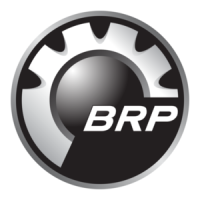
Do you have a question about the BRP Sea-Doo Wake Pro 230 2022 and is the answer not in the manual?
Essential safety information and operational guidelines before piloting the watercraft.
Crucial safety precautions and rules before operating the watercraft, including age and qualifications.
Mandatory and recommended protective equipment for all riders, including PFDs and neoprene shorts.
Discussion on helmet use for watercraft, considering benefits and potential risks.
Importance of the tether cord for safety and preventing accidental starting.
Information on the iBR system for braking and reverse, and its proper use.
Guidelines for safely operating the watercraft with passengers, including seating and holding instructions.
Strategies for preventing collisions by scanning, maintaining distance, and being aware of others.
Hazards of carbon monoxide from engine exhaust and methods to prevent exposure.
Precautions related to gasoline flammability and explosive vapors, and safe fueling practices.
Step-by-step instructions for safely refueling the watercraft, including cap handling and spill prevention.
Explanation of the purpose and importance of various safety labels affixed to the watercraft.
Warnings and instructions related to fuel handling, fire prevention, and engine compartment safety.
Checklist and procedures for inspecting the watercraft before launching, ensuring readiness and safety.
Post-launch checks for the information center, iBR system, and VTS before riding.
Steps to safely test the iBR system operation in water, checking for movement and neutral engagement.
Function of the engine cut-off switch and the tether cord's role in starting and stopping.
Procedure for starting and stopping the engine, including electrical system wake-up.
Electronic control of brake, reverse, and neutral using the iBR lever.
Overview of the large panoramic display's capabilities and layout.
Explanation of the default and multifunction display screens.
Detailed view of the multifunction display with various gauges and indicators.
Explanation of warning and telltale lights on the large display.
Interpretation of icons related to modes, maintenance, and system status.
Explanation of informational messages and indicator lamps displayed on the gauge.
Guidelines for the initial break-in period, including throttle limits and speed variations.
Safe methods for boarding the watercraft from various positions, emphasizing caution.
Instructions for boarding with a passenger, ensuring stability and safety.
Detailed steps and safety precautions for starting the watercraft engine.
Methods for safely shutting down the engine to maintain control.
Explanation of steering mechanics and the critical role of throttle for directional control.
Procedures for engaging neutral, including iBR gate positioning and adjustments.
Steps for engaging forward thrust from neutral or reverse, and from braking.
Procedures for engaging and using reverse, including speed limitations.
Detailed instructions on using the iBR braking system, including speed requirements and practice.
How to brake during a turn, maintaining balance and awareness of wake effects.
Explanation of the VTS system for adjusting jet pump nozzle position to optimize performance.
Automatic adjustment of VTS for optimal acceleration, including activation and deactivation.
Techniques for slowing down, stopping, and docking, including iBR system use and practice.
Mode providing instant throttle response and rapid acceleration for performance riding.
Functionality of the speed limiter for setting maximum watercraft speed.
Functionality of Slow Speed Mode for controlled low-speed operation and obstacle avoidance.
Features of Ski Mode for controlled launches and towing speeds, requiring GPS signal.
Procedures for cleaning the jet pump intake and impeller to remove debris and prevent damage.
Precautions and speed limits for towing a watercraft in water to prevent engine damage.
Recommended engine oil specifications and type for different engine configurations.
Procedure for checking engine oil level, including warnings about hot components and proper leveling.
Instructions for performing engine oil and filter changes, including who can perform the service.
Recommended engine coolant types and procedures for checking coolant level.
Locating Hull Identification Number (HIN) and Engine Identification Number (EIN).
Location and composition of the Hull Identification Number (HIN).
Location of the Engine Identification Number (EIN) on the engine.
Details on manufacturer, dealer, and owner responsibilities regarding engine emissions.
Detailed engine specifications including type, power, induction, cylinders, bore, stroke, and compression ratio.
Details on fuel injection type, fuel type, recommended octane, and fuel tank capacity.
Specifications for dry weight, passenger load, storage capacity, and dimensions.
Common causes and solutions when the engine fails to start.
Troubleshooting steps for slow engine cranking, often related to battery or starter issues.
Diagnosis for situations where the engine cranks but doesn't start, checking fuel, spark, and ECM.
Solutions for engine misfires or irregular running, including spark plugs, fuel, and injectors.
Causes and remedies for engine smoke, such as high oil level or coolant leaks.
Troubleshooting steps for engine overheating, including clogged exhaust and coolant issues.
Diagnosing and resolving issues related to poor engine acceleration or power loss.
Troubleshooting for issues preventing the watercraft from reaching its maximum speed.
Addressing problems where the iBR gate remains in neutral after operation.
Troubleshooting for iBR system faults indicated by a steady light.
Addressing iBR issues when the indicator light is off, related to throttle lever.
Identifying and resolving abnormal noises originating from the propulsion system, like impeller issues.
Troubleshooting common causes of water in the bilge, such as bailer system or exhaust leaks.
How to view and interpret fault codes displayed by the monitoring system.
Understanding the meaning of pilot lamps and messages from the information center.
Detailed descriptions of messages displayed for vehicle conditions and malfunctions.




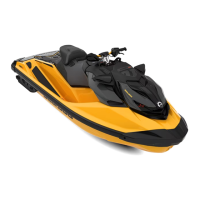



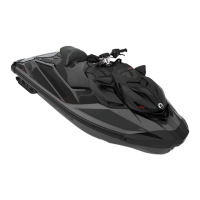
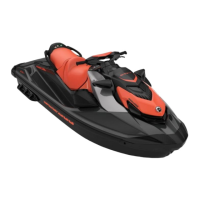
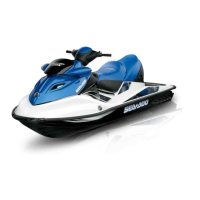

